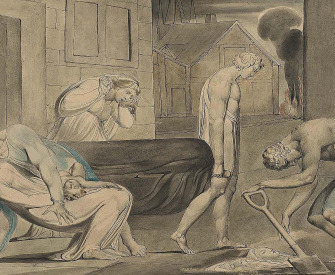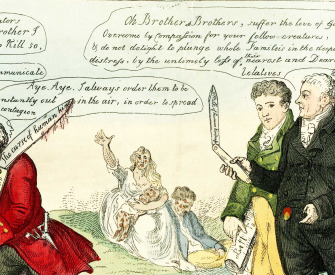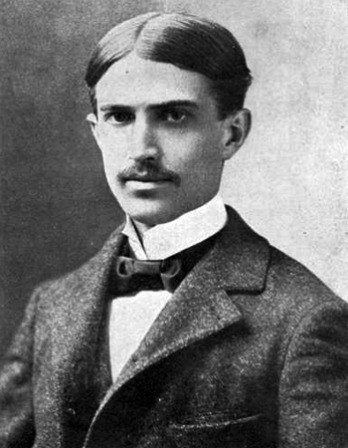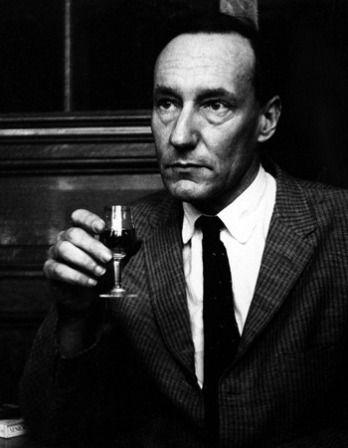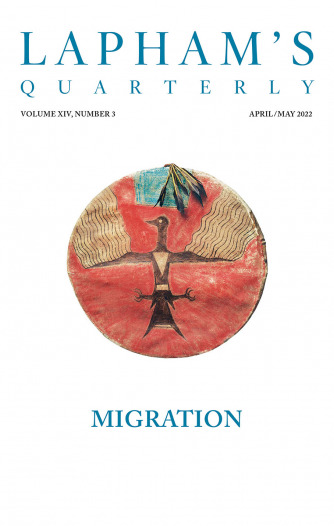When I do a show, the whole show revolves around me, and if I don’t show up, they can just forget it.
—Ethel Merman, 1955Frederick Treves Catches a Falling Star
Reminiscences of the Elephant Man.
In the Mile End Road, opposite to the London Hospital, there was a line of small shops. Among them was a vacant greengrocer’s which was to let. The whole of the front of the shop, with the exception of the door, was hidden by a hanging sheet of canvas on which was the announcement that the Elephant Man was to be seen within and that the price of admission was twopence. Painted on the canvas in primitive colors was a life-size portrait of the Elephant Man. This very crude production depicted a frightful creature that could only have been possible in a nightmare. It was the figure of a man with the characteristics of an elephant. The transfiguration was not far advanced. There was still more of the man than of the beast. This fact—that it was still human—was the most repellent attribute of the creature. There was nothing about it of the pitiableness of the misshapened or the deformed, nothing of the grotesqueness of the freak, but merely the loathsome insinuation of a man being changed into an animal.
I was granted a private view on payment of a shilling. The shop was empty and gray with dust. The light in the place was dim, being obscured by the painted placard outside.
The showman pulled back the curtain and revealed a bent figure crouching on a stool and covered by a brown blanket. In front of it on a tripod was a large brick heated by a Bunsen burner. Over this the creature was huddled to warm itself. It never moved when the curtain was drawn back. Locked up in an empty shop and lit by the faint blue light of the gas jet, this hunched-up figure was the embodiment of loneliness. It might have been a captive in a cavern or a wizard watching for unholy manifestations in the ghostly flame.
The showman—speaking as if to a dog—called out harshly, “Stand up!” The thing arose slowly and let the blanket that covered its head and back fall to the ground. There stood revealed the most disgusting specimen of humanity that I have ever seen. In the course of my profession I had come upon lamentable deformities of the face due to injury or disease, as well as mutilations and contortions of the body depending upon like causes, but at no time had I met with such a degraded or perverted version of a human being as this lone figure displayed.
From the intensified painting in the street, I had imagined the Elephant Man to be of gigantic size. This, however, was a little man below the average height and made to look shorter by the bowing of his back. The most striking feature about him was his enormous and misshapened head. From the brow there projected a huge bony mass like a loaf, while from the back of the head hung a bag of spongy, fungus-looking skin, the surface of which was comparable to brown cauliflower. On the top of the skull were a few long lank hairs. The osseous growth on the forehead almost occluded one eye. The circumference of the head was no less than that of the man’s waist. From the upper jaw there projected another mass of bone. It protruded from the mouth like a pink stump, turning the upper lip inside out and making of the mouth a mere slobbering aperture. This growth from the jaw had been so exaggerated in the painting as to appear to be a rudimentary trunk or tusk. The nose was merely a lump of flesh, only recognizable as a nose from its position. The face was no more capable of expression than a block of gnarled wood. The back was horrible, because from it hung, as far down as the middle of the thigh, huge, sacklike masses of flesh covered by the same loathsome cauliflower skin.
To add a further burden to his trouble, the wretched man, when a boy, developed hip disease, which had left him permanently lame, so that he could only walk with a stick. He was thus denied all means of escape from his tormentors. As he told me later, he could never run away. From the showman I learned nothing about the Elephant Man, except that he was English and his name was John Merrick.
I was the lecturer on anatomy at the medical college opposite, and I was anxious to examine him in detail and to prepare an account of his abnormalities. I therefore arranged with the showman that I should interview his strange exhibit in my room at the college. I became at once conscious of a difficulty. The Elephant Man could not show himself in the streets. He would have been mobbed by the crowd and seized by the police. He was, in fact, as secluded from the world as the Man with the Iron Mask. He had, however, a disguise, although it was almost as startling as he was himself. It consisted of a long black cloak which reached to the ground and a pair of baglike slippers in which to hide his deformed feet. On his head was a cap of a kind that never before was seen. It was black like the cloak, had a wide peak, and the general outline of a yachting cap. As the circumference of Merrick’s head was that of a man’s waist, the size of his headgear may be imagined. From the attachment of the peak, a gray flannel curtain hung in front of the face. In this mask was cut a wide horizontal slit through which the wearer could look out. This costume, worn by a bent man hobbling along with a stick, is probably the most remarkable and the most uncanny that has as yet been designed. I arranged that Merrick should cross the road in a cab, and to insure his immediate admission to the college I gave him my card.
I made a careful examination of my visitor the result of which I embodied in a paper. I made little of the man himself. He was shy, confused, not a little frightened, and evidently much cowed. Moreover, his speech was almost unintelligible. He returned in a cab to the place of exhibition, and I assumed that I had seen the last of him, especially as I found next day that the show had been forbidden by the police and that the shop was empty.
I was fated to meet him again—two years later—under more dramatic conditions. In England the showman and Merrick had been moved on from place to place by the police, who had considered the exhibition degrading and among the things that could not be allowed. It was hoped that in the uncritical retreats of Mile End a more abiding peace would be found. But it was not to be. The official mind there, as elsewhere, very properly decreed that the public exposure of Merrick and his deformities transgressed the limits of decency. The show must close.

Pandava brothers, victors over the Kauravas in the Kurukshetra War, a central story of the Mahabharata, Somnath Temple, Gujarat, India. © Surya Temple, Dinodia, The Bridgeman Art Library International.
The showman, in despair, fled with his charge to the Continent. Whither he roamed at first I do not know, but he came finally to Brussels. His reception was discouraging. Brussels was firm—the exhibition was banned; it was brutal, indecent, and immoral, and could not be permitted within the confines of Belgium. Merrick was thus no longer of value. He was no longer a source of profitable entertainment. He was a burden. He must be gotten rid of. The elimination of Merrick was a simple matter. He could offer no resistance. He was as docile as a sick sheep. The impresario, having robbed Merrick of his paltry savings, gave him a ticket to London, saw him into the train and no doubt in parting condemned him to perdition.
His destination was Liverpool Street. The journey may be imagined. Merrick was in his alarming outdoor garb. He would be harried by an eager mob as he hobbled along the quay. They would run ahead to get a look at him. They would lift the hem of his cloak to peep at his body. He would try to hide in the train or in some dark corner of the boat, but never could he be free from that ring of curious eyes or from those whispers of fright and aversion.
What was he to do when he reached London? He had not a friend in the world. He knew no more of London than he knew of Peking. How could he find a lodging, or what lodging-house keeper would dream of taking him in? All he wanted was to hide. What he most dreaded were the open street and the gaze of his fellow men. If even he crept into a cellar, the horrid eyes and the still more dreaded whispers would follow him to its depths. Was there ever such a homecoming!
At Liverpool Street he was rescued from the crowd by the police and taken into the third-class waiting room. Here he sank on the floor in the darkest corner. The police were at a loss what to do with him. They had dealt with strange and moldy tramps, but never with such an object as this. He could not explain himself. His speech was so maimed that he might as well have spoken in Arabic. He had, however, something with him which he produced with a ray of hope. It was my card.
Those who know the joys and miseries of celebrities when they have passed the age of forty know how to defend themselves.
—Sarah Bernhardt, 1904A messenger was dispatched to the London Hospital, which is comparatively near at hand. Fortunately I was in the building and returned at once with the messenger to the station. In the waiting room I had some difficulty in making a way through the crowd, but there, on the floor in the corner, was Merrick. He looked a mere heap. It seemed as if he had been thrown there like a bundle. He seemed pleased to see me, but he was nearly done. The journey and want of food had reduced him to the last stage of exhaustion. The police kindly helped him into a cab, and I drove him at once to the hospital. He appeared to be content, for he fell asleep almost as soon as he was seated and slept to the journey’s end. He never said a word, but seemed to be satisfied that all was well.
Merrick’s life up to the time that I met him at Liverpool Street Station was one dull record of degradation and squalor. He was dragged from town to town and from fair to fair as if he were a strange beast in a cage. A dozen times a day he would have to expose his nakedness and his piteous deformities before a gaping crowd who greeted him with such mutterings as, “Oh! What a horror! What a beast!” He had had no childhood. He had had no boyhood. He had never experienced pleasure. He knew nothing of the joy of living nor of the fun of things. His sole idea of happiness was to creep into the dark and hide. Shut up alone in a booth, awaiting the next exhibition, how mocking must have sounded the laughter and merriment of the boys and girls outside who were enjoying the “fun of the fair”! He had no past to look back upon and no future to look forward to. At the age of twenty he was a creature without hope. There was nothing in front of him but a vista of caravans creeping along a road, of rows of glaring show tents and of circles of staring eyes with, at the end, the spectacle of a broken man in a poor-law infirmary.

Fredrick Treves
From The Elephant Man. Apparently a healthy child, Merrick began to manifest strange symptoms around the age of five, the size of his head swelling to a diameter of three feet. He was placed in a workhouse at the age of seventeen and escaped four years later, working in a freak show until the physician Treves admitted him to the London Hospital in 1886. Merrick died there at the age of twenty-six in 1890.
